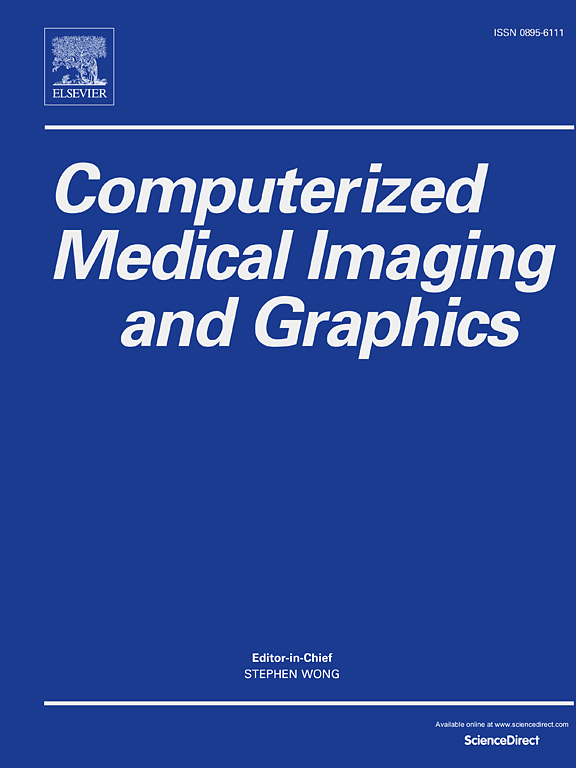A graph neural network-based model with out-of-distribution robustness for enhancing antiretroviral therapy outcome prediction for HIV-1
IF 5.4
2区 医学
Q1 ENGINEERING, BIOMEDICAL
Computerized Medical Imaging and Graphics
Pub Date : 2025-01-10
DOI:10.1016/j.compmedimag.2024.102484
引用次数: 0
Abstract
Predicting the outcome of antiretroviral therapies (ART) for HIV-1 is a pressing clinical challenge, especially when the ART includes drugs with limited effectiveness data. This scarcity of data can arise either due to the introduction of a new drug to the market or due to limited use in clinical settings, resulting in clinical dataset with highly unbalanced therapy representation. To tackle this issue, we introduce a novel joint fusion model, which combines features from a Fully Connected (FC) Neural Network and a Graph Neural Network (GNN) in a multi-modality fashion. Our model uses both tabular data about genetic sequences and a knowledge base derived from Stanford drug-resistance mutation tables, which serve as benchmark references for deducing in-vivo treatment efficacy based on the viral genetic sequence. By leveraging this knowledge base structured as a graph, the GNN component enables our model to adapt to imbalanced data distributions and account for Out-of-Distribution (OoD) drugs. We evaluated these models’ robustness against OoD drugs in the test set. Our comprehensive analysis demonstrates that the proposed model consistently outperforms the FC model. These results underscore the advantage of integrating Stanford scores in the model, thereby enhancing its generalizability and robustness, but also extending its utility in contributing in more informed clinical decisions with limited data availability. The source code is available at https://github.com/federicosiciliano/graph-ood-hiv.
基于分布外鲁棒性的图神经网络模型用于增强HIV-1抗逆转录病毒治疗结果预测。
预测针对HIV-1的抗逆转录病毒治疗(ART)的结果是一项紧迫的临床挑战,特别是当ART包括有效性数据有限的药物时。这种数据的稀缺性可能是由于向市场推出新药或由于临床环境中的使用有限,导致临床数据集具有高度不平衡的治疗代表性。为了解决这个问题,我们引入了一种新的联合融合模型,该模型以多模态方式结合了全连接(FC)神经网络和图神经网络(GNN)的特征。我们的模型使用了关于基因序列的表格数据和来自斯坦福耐药突变表的知识库,这可以作为基于病毒基因序列推断体内治疗效果的基准参考。通过利用这个以图的形式构建的知识库,GNN组件使我们的模型能够适应不平衡的数据分布,并考虑到非分布(OoD)药物。我们在测试集中评估了这些模型对OoD药物的鲁棒性。我们的综合分析表明,所提出的模型始终优于FC模型。这些结果强调了将斯坦福分数整合到模型中的优势,从而增强了其通用性和稳健性,同时也扩展了其在有限数据可用性下为更明智的临床决策做出贡献的效用。源代码可从https://github.com/federicosiciliano/graph-ood-hiv获得。
本文章由计算机程序翻译,如有差异,请以英文原文为准。
求助全文
约1分钟内获得全文
求助全文
来源期刊
CiteScore
10.70
自引率
3.50%
发文量
71
审稿时长
26 days
期刊介绍:
The purpose of the journal Computerized Medical Imaging and Graphics is to act as a source for the exchange of research results concerning algorithmic advances, development, and application of digital imaging in disease detection, diagnosis, intervention, prevention, precision medicine, and population health. Included in the journal will be articles on novel computerized imaging or visualization techniques, including artificial intelligence and machine learning, augmented reality for surgical planning and guidance, big biomedical data visualization, computer-aided diagnosis, computerized-robotic surgery, image-guided therapy, imaging scanning and reconstruction, mobile and tele-imaging, radiomics, and imaging integration and modeling with other information relevant to digital health. The types of biomedical imaging include: magnetic resonance, computed tomography, ultrasound, nuclear medicine, X-ray, microwave, optical and multi-photon microscopy, video and sensory imaging, and the convergence of biomedical images with other non-imaging datasets.

 求助内容:
求助内容: 应助结果提醒方式:
应助结果提醒方式:


